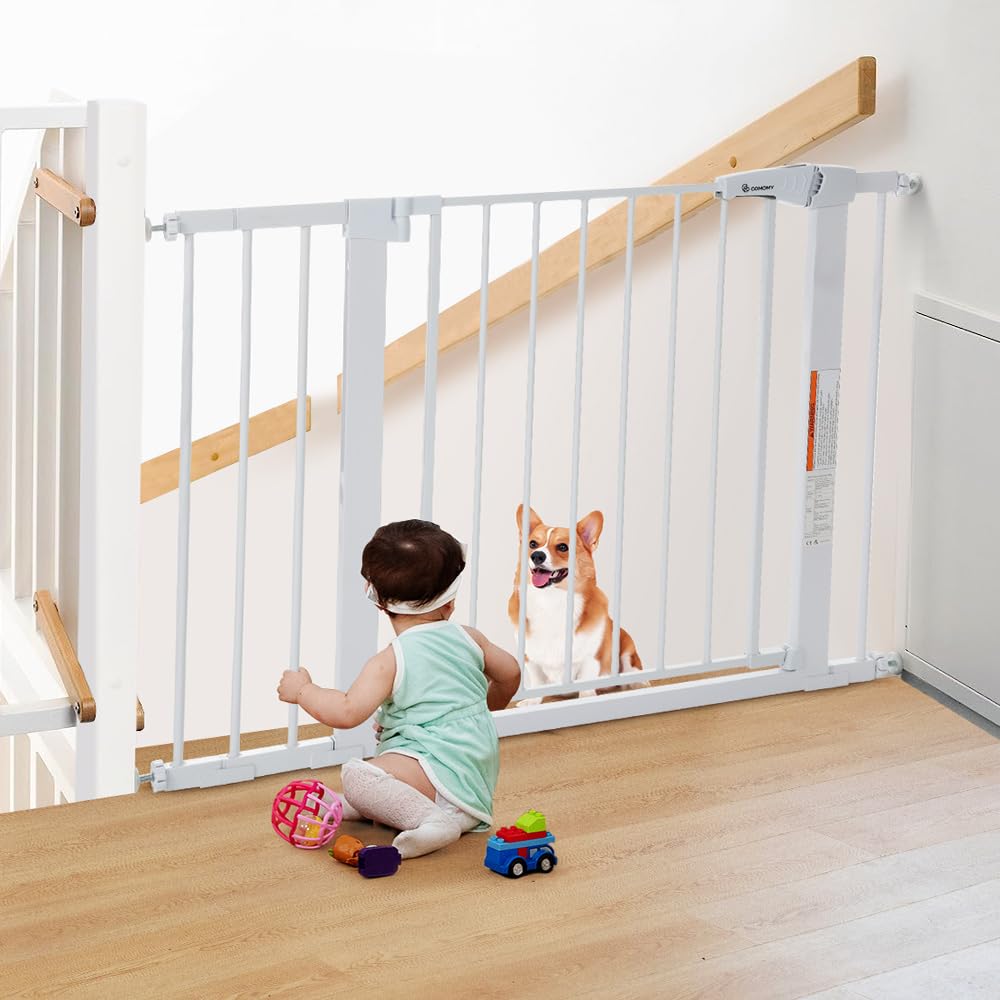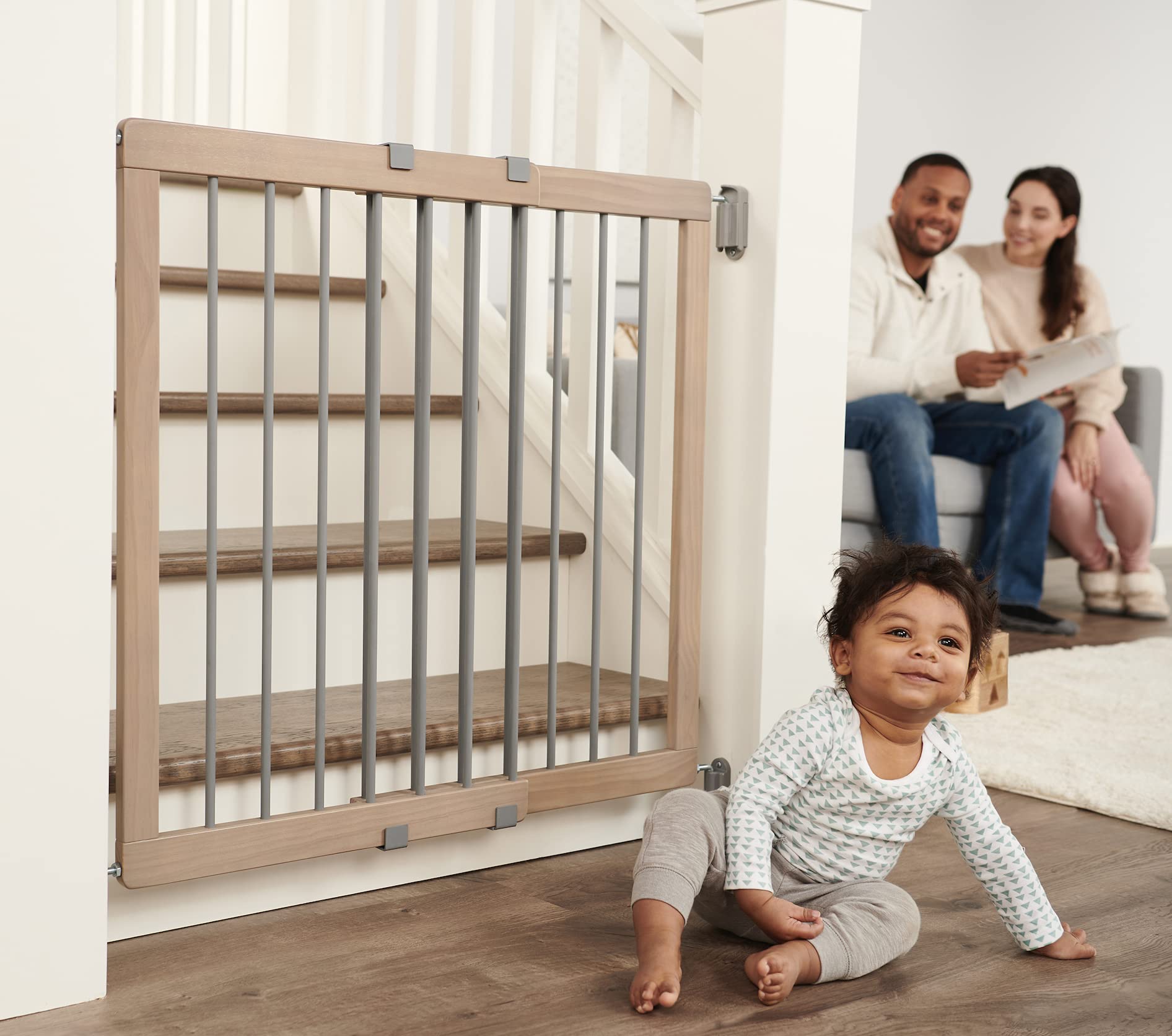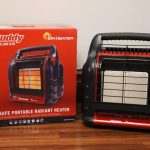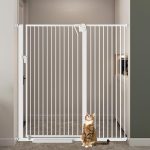When it comes to creating a safe home environment for young explorers, baby safety gates are essential. They act as barriers to potential dangers, allowing parents peace of mind while their children play and learn to navigate their surroundings. To make your home childproof, you need to choose and install the right baby safety gate. This guide walks you through the various options and factors to consider, ensuring your little ones have the freedom to explore without compromising their safety.
Understanding Different Types of Safety Gates
Pressure-Mounted Gates for Versatility
Pressure-mounted gates are a popular choice for their versatility and ease of installation. They use tension to stay in place, requiring no drilling or permanent fixtures. They’re ideal for doorways or as a temporary solution you can move between rooms. However, because they’re not screwed into the wall, they may not be suitable for high-risk areas such as staircases.
Hardware-Mounted Gates for Extra Security
For areas where your child’s safety is paramount, like the top or bottom of staircases, hardware-mounted gates offer the highest level of security. These gates attach to the walls or banisters with screws, providing a sturdy, unwavering barrier. While they require more effort to install, the added security makes them worth it, ensuring they don’t budge even when curious little ones tug or lean on them.

Features to Consider for Optimal Safety and Convenience
Gate Height and Width Adjustability
When choosing a safety gate, height and width are critical. A gate should be tall enough to discourage your child from attempting to climb over it, generally at least three-quarters of their height. As for width, many gates include extensions or adjustable panels to fit a range of openings. Make sure to measure your spaces accurately before purchasing to ensure a snug fit.
Lock Mechanisms and Ease of Use
The lock mechanism of a baby safety gate must be childproof yet convenient for adults to operate. Gates come with various locking features, from simple push-down mechanisms to double-locking systems that require two actions to open. Consider ease of access for everyday use, particularly if the gate will be placed in a high-traffic area.
Installing Your Baby Safety Gate Correctly
Following Manufacturer Instructions Precisely
Proper installation is key to a gate’s effectiveness. Each product comes with manufacturer instructions specific to its design. Adhere to these steps closely to ensure your safety gate function as intended. If you’re using a hardware-mounted gate, use a stud finder to anchor it securely and check its stability before allowing your child near it.
Regular Maintenance and Safety Checks
Once installed, regular maintenance and safety checks are crucial to the gate’s longevity and reliability. Periodically tighten any loose screws, and always test the lock to verify your child can’t open it. For pressure-mounted gates, check the tension regularly to ensure it has not loosened over time, which can happen as children push or lean against it.
Beyond the Safety Gate
Educating on Safety beyond Barriers
In addition to installing baby safety gates, educating your child about safety as they grow is essential. As they become more mobile and curious, explaining the importance of boundaries and why certain areas are off-limits can reinforce the physical barriers you put in place.
Integrating with Your Overall Childproofing Strategy
Baby safety gates should be one component of your broader childproofing strategy. Combine their use with other safety measures, such as securing furniture to the walls, covering electrical outlets, and removing small choking hazards from reach. A multi-faceted approach ensures your child enjoys a safe exploratory experience, and you enjoy greater peace of mind.
Choosing the right baby safety gate is more than a matter of preference; it’s about ensuring the safety and well-being of your child as they discover the world around them. Whether you opt for a pressure-mounted or hardware-mounted gate, it’s essential to consider factors like height, width, and lock mechanisms to create a secure environment. With correct installation and regular checks, a quality baby safety gate can serve as a reliable safeguard in your home. Remember, no safety device replaces vigilant supervision, and combining gates with a comprehensive childproofing strategy and safety education offers the best protection for your little one.


